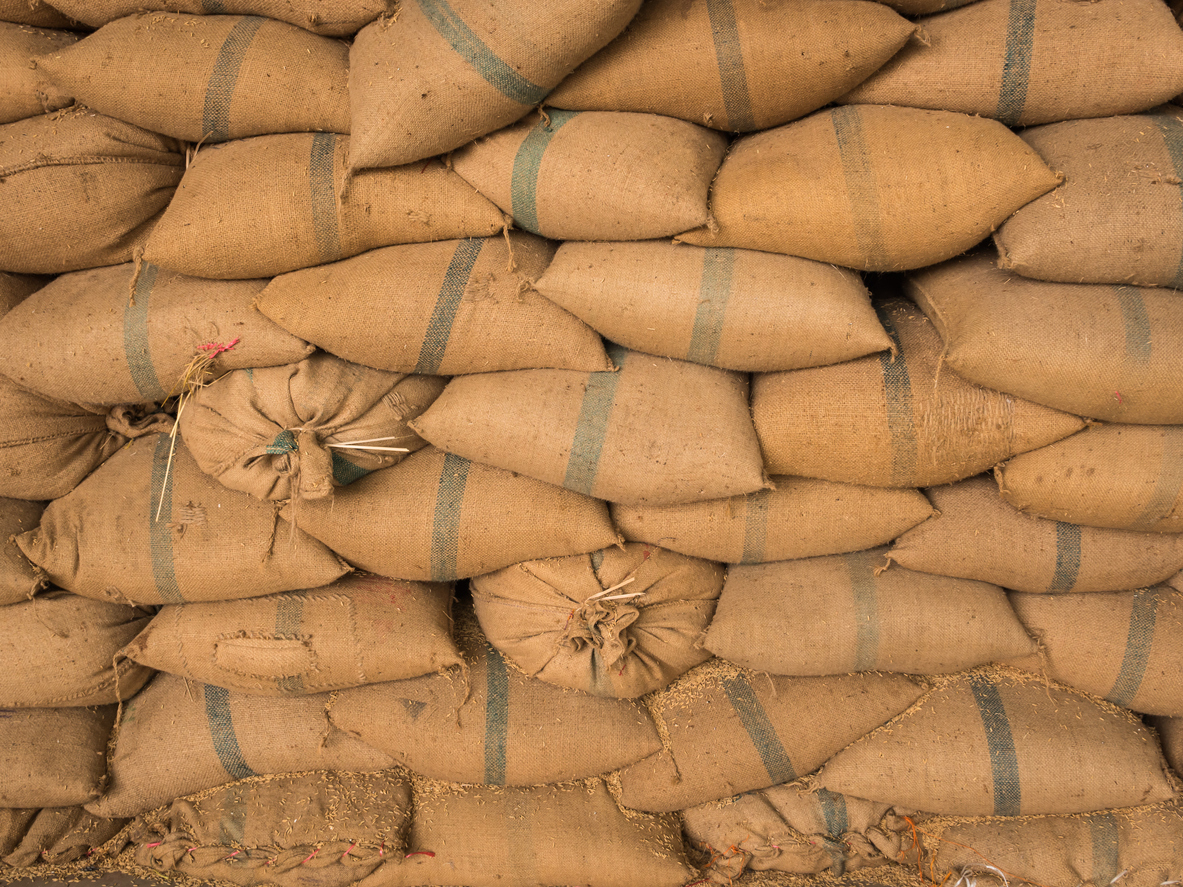
Chhattisgarh trades surplus rice for bio-ethanol, sparks food vs grain debate

After the project to produce biodiesel from jatropha failed to take off, Chhattisgarh has now turned its attention towards the production of bio-ethanol from surplus rice, sparking the food versus fuel debate.
The state’s Congress government signed four memoranda of understanding (MoUs) with private enterprises earlier this week to set up one each bio-ethanol production unit in Janjgir-Champa and Mahasamund and two at Mungeli district.
The combined annual target of these units is to produce 1,17,500 kilolitres of ethanol for which 3, 50,000 tons of rice will be needed as raw material.
The inking of MoUs took place after the National Biofuel Coordination Committee (NBCC) under the Ministry of Petroleum and Natural Gas in April gave the approval to convert surplus rice stocks into ethanol to be used in making alcohol-based hand-sanitisers and for blending in petrol.
Related news: Congress govt to promote Chhattisgarh as Lord Rama’s maternal home
The Centre’s decision was a deviation from the earlier approach of using non-food resources to produce bio-fuel, and it comes at a time when India’s ranking in the Global Hunger Index has slipped nine places.
The Chhattisgarh government is amongst the first to go off the blocks to take advantage of the Centre’s new policy to allow conversion of surplus food grains to ethanol.
According to a concept note of the Chhattisgarh state Industrial Development Corporation Limited (IDCL), the nodal agency to promote the bio-fuel sector in the state estimated six lakh metric tonnes of paddy will be available after meeting requirement of Public Distribution System (PDS), for production of ethanol.
Given the current level of surplus rice and the likely increase in production, there will be a requirement of at least six bio-ethanol production plants in the state, according to the IDCL.
The state government signed the MoU with the Chhattisgarh Distilleries, Durg, Chiranjivni Realcon Pvt Limited, Bilaspur, Cubico Chemicals Pirvate Limited, Bhilai and Shyam Warehousing and Power Private Limited, Janjgir-Champa to set up the four units, identifying bio-ethanol as the focus sector for investments under its Industrial Policy.
To encourage investment in this sector, the government is also offering a slew of incentives such as interest subsidy, fixed capital investment subsidy and electricity duty exemption among others. It’s also offering a special grant of ₹2 crore under an early bird scheme for the first six units that can sell the ethanol/bio-fuel to public sector enterprises such as Hindustan Petroleum, Indian Oil, Bharat Petroleum etc. within the six months from the date of execution of MoU.
The Centre’s 2018 Biofuel Policy set the target of 20 per cent ethanol blending with petrol and 5 per cent biodiesel-blending by the year 2030. Currently the blending ration stands at around 2 per cent for petrol and less than 0.1 per cent for diesel.
The Chhattisgarh government claims that its bio-ethanol production initiative will not only reduce the use of petrol and diesel, but also strengthen the agrarian economy by fetching good support price of grains.
Related news: Chhattisgarh logs in higher GST, shows signs of recovery
Experts and food rights groups around the world, however, caution the use of grain for fuel is fraught with danger of triggering food inflation and shortage, citing how some developing countries such as the United States are contributing to the rise in food prices globally by diverting food crops to produce bio-fuel. In 2018-19, 37.6 per cent of the corn produced in the US was used for making ethanol.
“We need to move from the food versus fuel debate to a food and fuel debate. There is no question: food comes first,” the Food and Agriculture Organisation of the United Nations observes.
The Right to Food Campaign, an informal network of individuals and organisations committed to the realisation of the right to food in India, too has flayed the Centre’s decision to divert food grain for the production of ethanol.
Chhattisgarh’s agriculture minister and government spokesperson Ravindra Choubey said the state was using the rice for ethanol production because its consistent request to the Centre to purchase the surplus paddy from the state for the central pool went unheard.
He, however, refuted the possibility of the move triggering food shortage in the long run. “Chhattisgarh is called the rice bowl of the country because it produces more than enough. As against 24 LMT of rice needed by the state government for disbursement under PDS, the state procured 1.25 crore MT of paddy in the previous Kharif season,” he said.
The previous BJP government in the state had also embarked on a similar ambitious plan to produce biodiesel from jatropha plants to make the state a bio-fuel hub. Crores of rupees were spent by the state government to plant jatropha on fallow and barren government land with an aim to produce two million tons of biodiesel.
It had said that one hectare of jatropha plantation would yield two tons of biodiesel on an average.
At that time the project became commercially unviable as the yield was much less than what was expected. Moreover, the cultivation of toxic jatropha plants led to environmental problems.
Choubey, however, said the previous initiative failed because there was no proper planning. He said the present endeavour would not meet the same fate. “Unlike in the past, we are now only facilitating the industries by making available to them the existing raw resource needed for ethanol production.”
(With inputs from Abhijat Shukla in Raipur)

